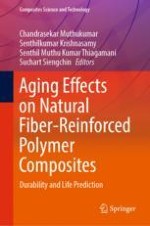This book covers the topic of degradation phenomenon of natural fiber-based composites (NFC) under various aging conditions and proposes suitable solutions to improve the response of natural fiber-reinforced composite to aging conditions such as moisture, seawater, hygrothermal, and natural and accelerated weathering. The information provided by the book plays a vital role in the durability and shelf life of the composites as well as broadening the scope of outdoor application for natural fiber-based composites. The book will be appropriate for researchers and scientist who are interested in the application of natural fiber composites in various fields.
